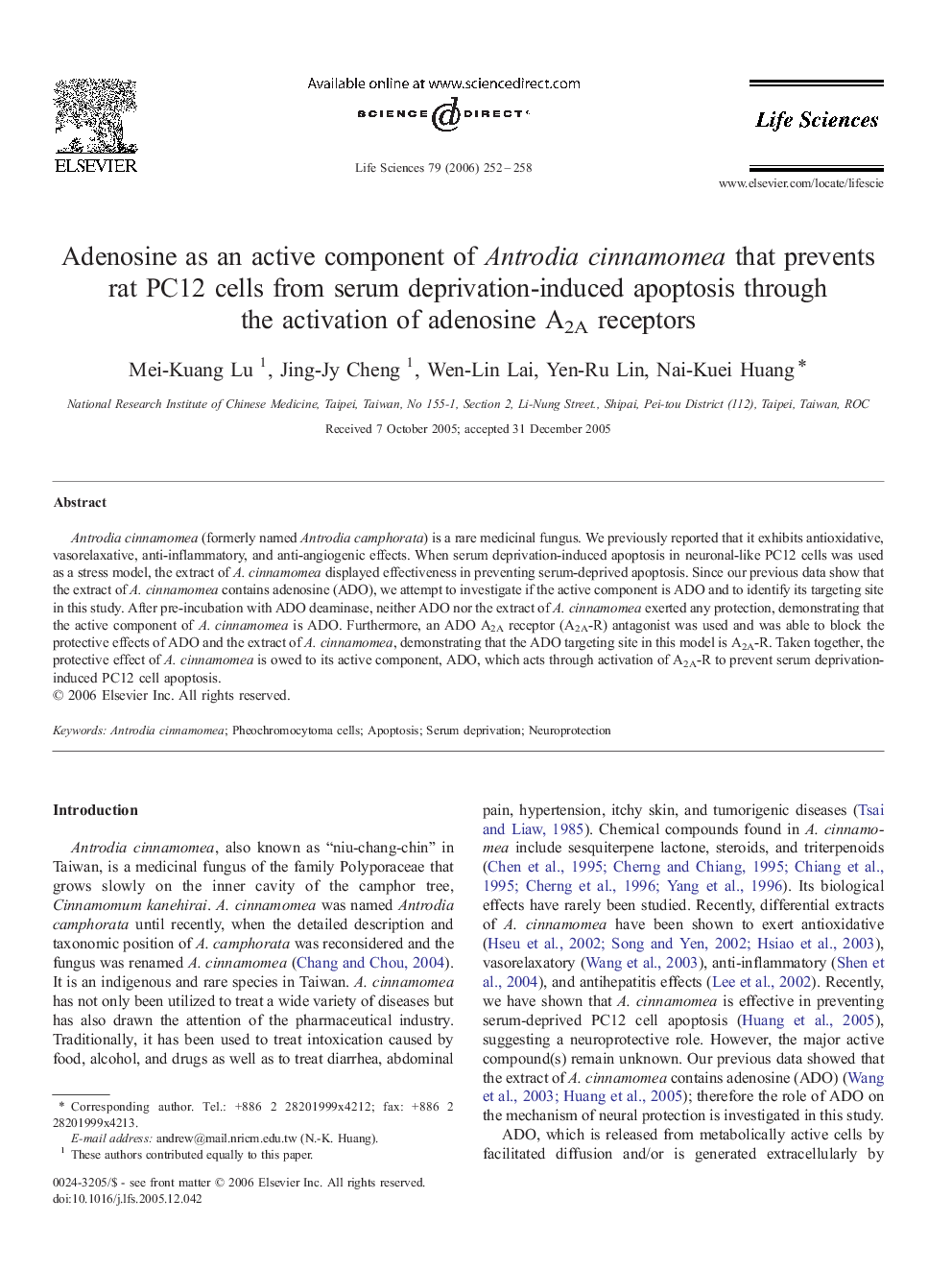| Article ID | Journal | Published Year | Pages | File Type |
|---|---|---|---|---|
| 2554511 | Life Sciences | 2006 | 7 Pages |
Abstract
Antrodia cinnamomea (formerly named Antrodia camphorata) is a rare medicinal fungus. We previously reported that it exhibits antioxidative, vasorelaxative, anti-inflammatory, and anti-angiogenic effects. When serum deprivation-induced apoptosis in neuronal-like PC12 cells was used as a stress model, the extract of A. cinnamomea displayed effectiveness in preventing serum-deprived apoptosis. Since our previous data show that the extract of A. cinnamomea contains adenosine (ADO), we attempt to investigate if the active component is ADO and to identify its targeting site in this study. After pre-incubation with ADO deaminase, neither ADO nor the extract of A. cinnamomea exerted any protection, demonstrating that the active component of A. cinnamomea is ADO. Furthermore, an ADO A2A receptor (A2A-R) antagonist was used and was able to block the protective effects of ADO and the extract of A. cinnamomea, demonstrating that the ADO targeting site in this model is A2A-R. Taken together, the protective effect of A. cinnamomea is owed to its active component, ADO, which acts through activation of A2A-R to prevent serum deprivation-induced PC12 cell apoptosis.
Related Topics
Health Sciences
Medicine and Dentistry
Cardiology and Cardiovascular Medicine
Authors
Mei-Kuang Lu, Jing-Jy Cheng, Wen-Lin Lai, Yen-Ru Lin, Nai-Kuei Huang,
